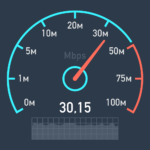In the vast expanse of the internet, billions of images swirl around, offering a treasure trove of visual content. But how can you ensure the authenticity and origin of these images, especially if you intend to use them for personal or commercial purposes?
With the proliferation of duplicated, stolen, or manipulated images circulating online, verifying their origins has become a crucial task. But fear not, as there are tools and techniques available to help you navigate this digital maze.
Independent Verification or Professional Assistance?
When it comes to high-profile legal copyright issues or extensive research, enlisting the help of a professional may be necessary. However, for everyday use, there are simpler methods at your disposal.
Reverse image search tools offer a convenient solution. These tools allow you to upload an image or input its URL, and then scour the web for similar or identical images, helping you trace their origins.
Let’s explore some of the top reverse image search tools available in 2024.
Exploring Reverse Image Search Tools
1. TinEye:
TinEye stands out as a valuable option, offering quick searches through its integration with Chrome. While starting with a free version, TinEye also provides enterprise solutions for automated image tracking and copyright protection.
2. Reverse Image Search:
Although not a standalone search engine, Reverse Image Search allows users to upload photos and choose from various search portals like Yandex, Google, and Bing, making it a comprehensive tool for image verification.
3. Pixsy:
Pixsy offers an intriguing reverse image search feature, requiring users to sign up for access. This tool allows importing images from multiple sources and offers enterprise plans for automated tracking and legal assistance in copyright matters.
4. Google Images:
Google’s Image search remains one of the most effective tools for reverse image searches. With its vast database, Google Images can often find matches or similar images even when other tools fail. It’s easily accessible without the need for sign-up.
5. Bing Visual Search:
Bing’s Visual Search rivals Google Images, offering a unique “text mode” for pinpointing search results based on selected text within an image. This feature adds an extra layer of convenience for users.
6. Yahoo Image Search:
While not as robust as some other options, Yahoo Image Search still holds relevance, particularly for scanning metadata or file names to identify similar images.
7. Reverse Image:
Reverse Image offers quick identification of image sources from top search engines like Google, Bing, Yandex, and Baidu. It supports various input methods, including image search, URL input, and local file upload.
Understanding Reverse Image Search Technique
Reverse Image Search is a technique used to track down the source or other instances of a particular image across the web. It serves various purposes, including identifying copyrighted work, verifying authenticity, and combating fake news.
Advantages of Reverse Image Search Tools
The benefits of using reverse image search tools are manifold:
- Free verification of image authenticity
- Time-saving compared to manual verification methods
- Access to royalty-free images
- Ability to identify unknown objects or locations
- Protection against image theft and unauthorized use
In Conclusion
Navigating the realm of digital images requires diligence and the right tools. Whether you’re a content creator, researcher, or simply a curious internet user, reverse image search tools offer invaluable assistance in verifying image origins and ensuring their authenticity. Explore the options available and choose the tool that best suits your needs.




